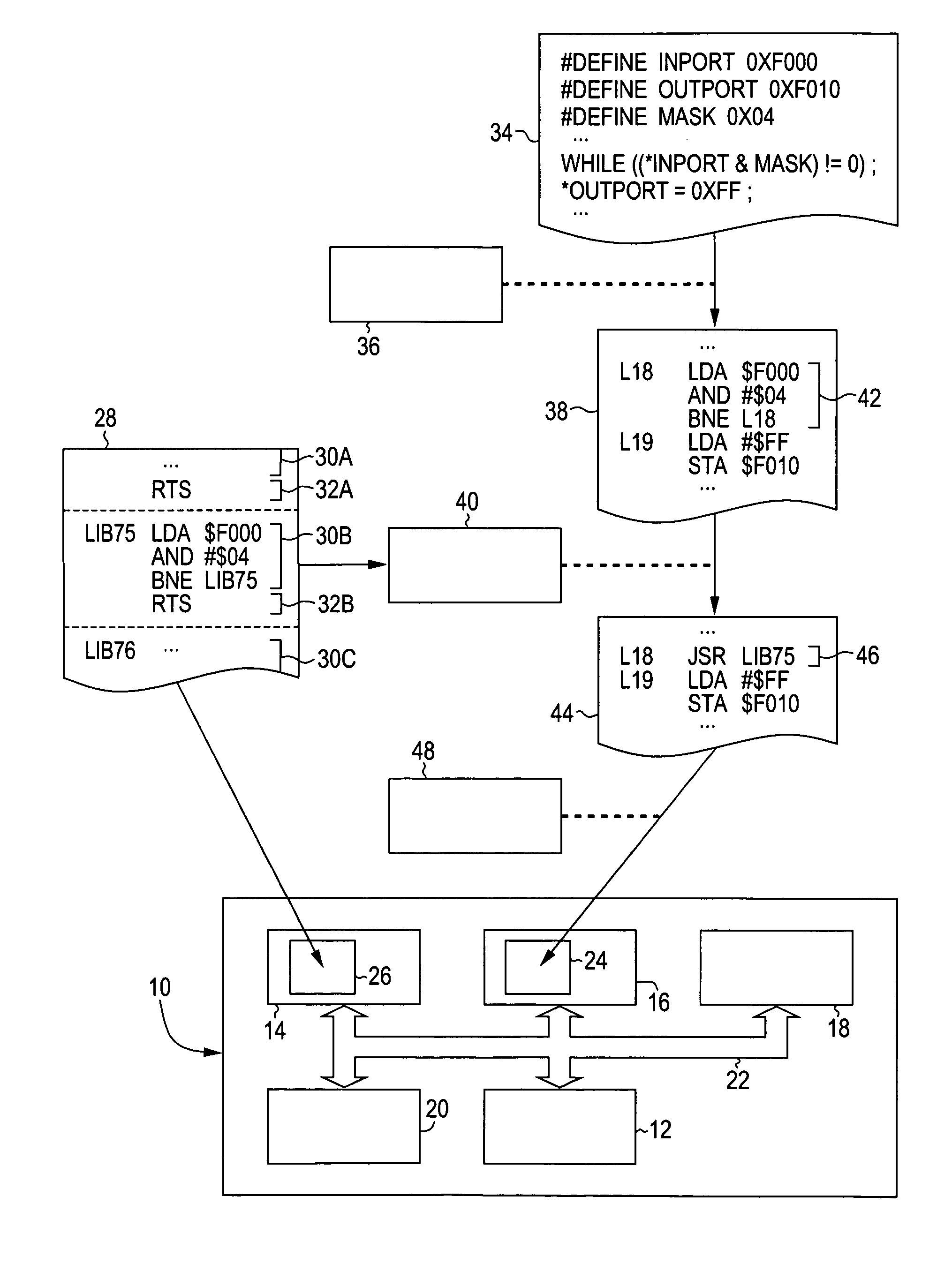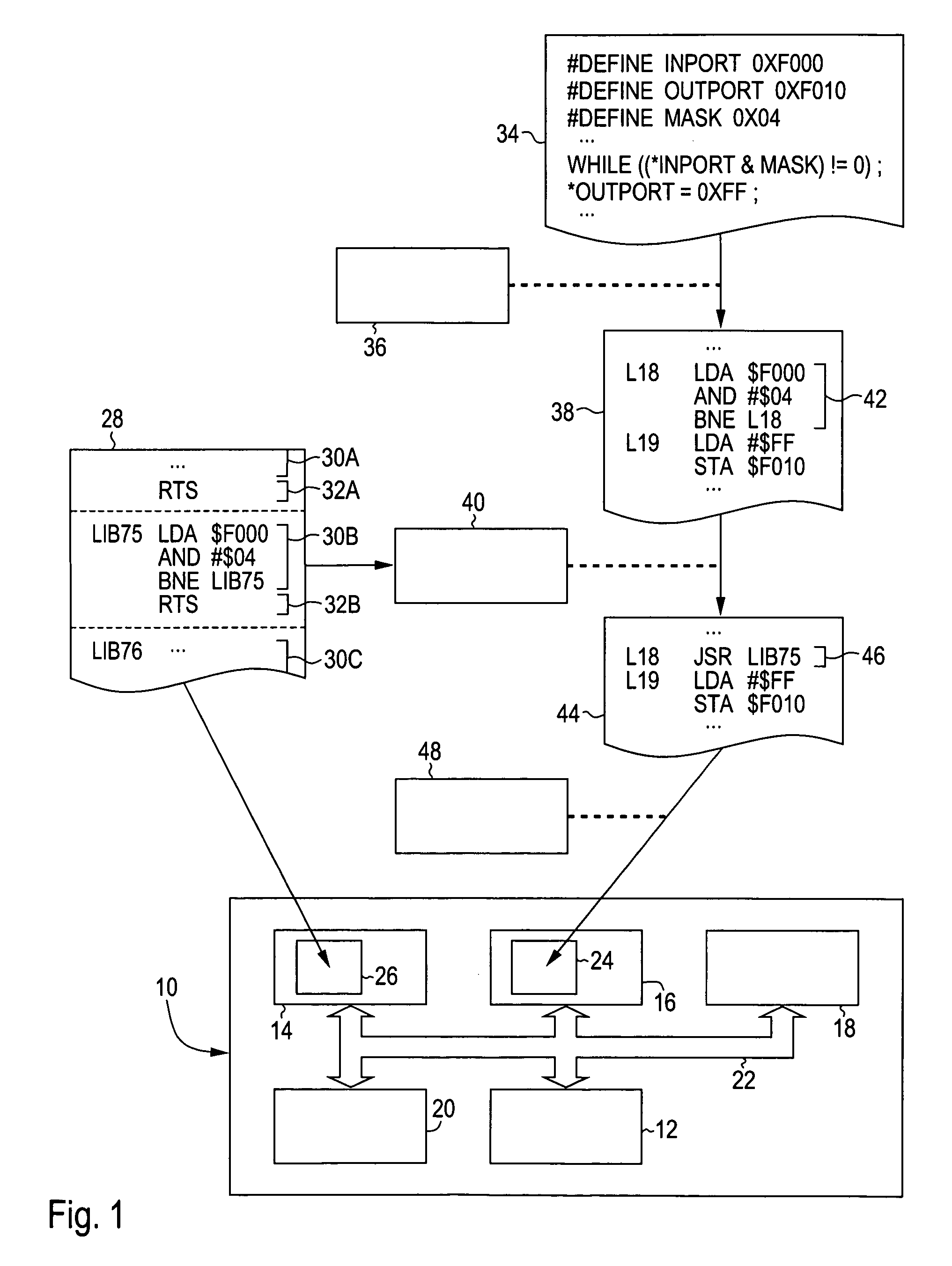Optimisation of a compiler generated program code
- Summary
- Abstract
- Description
- Claims
- Application Information
AI Technical Summary
Benefits of technology
Problems solved by technology
Method used
Image
Examples
Embodiment Construction
[0025]The invention is used in the programming of a portable data carrier 10 which, in the exemplary embodiment described here, is designed as a chip card. The data carrier 10 contains, in a manner known per se, a semiconductor chip having a processor core 12, a mask-programmed ROM 14, an EEPROM 16, a RAM 18, and an interface 20 for contactless or contact-bound communication. The said components are connected to one another via a bus 22. In alternative embodiments, the three memory fields 14, 16, 18 may be designed in other technologies; in particular, FLASH technology may be used for the ROM 14 and / or the EEPROM 16.
[0026]A first and a second memory area 24, 26 are conceptually provided in the memory fields 14, 16, 18. The first memory area 24 serves to receive the optimized program code in the form of executable machine code. A predefined library 28, likewise in the form of executable machine code, is stored in the second memory area 26. In the exemplary embodiment described here, ...
PUM
 Login to View More
Login to View More Abstract
Description
Claims
Application Information
 Login to View More
Login to View More - R&D
- Intellectual Property
- Life Sciences
- Materials
- Tech Scout
- Unparalleled Data Quality
- Higher Quality Content
- 60% Fewer Hallucinations
Browse by: Latest US Patents, China's latest patents, Technical Efficacy Thesaurus, Application Domain, Technology Topic, Popular Technical Reports.
© 2025 PatSnap. All rights reserved.Legal|Privacy policy|Modern Slavery Act Transparency Statement|Sitemap|About US| Contact US: help@patsnap.com


